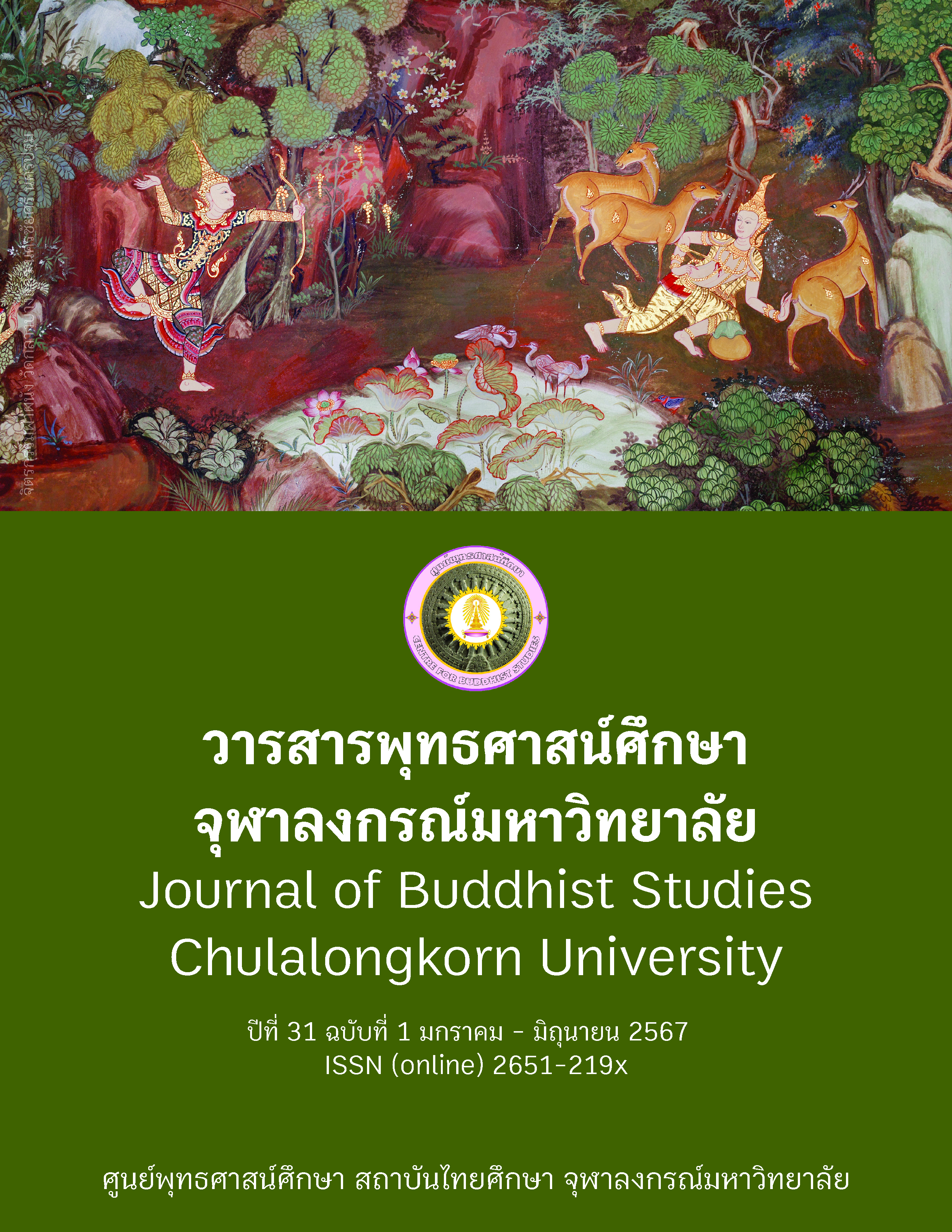The Mutually-Supporting Pair in the Chapter of Pairs of the Dhammapada Commentary
A Concept of the Pair of Supporting-Each-Other Couple in the Pairs Chapter of Dhammapada Commentary
Keywords:
Mutually-supporting pair, Pairs Chapter, Dhammapada CommentaryAbstract
Abstract
The purpose of this research article is to study the concept of the pair of Supporting-Each-Other Couple in the pairs chapter of Dhammapada Commentary. The design of this research is a qualitative research, by using data collection methods from the two stories of Sanjayaparipajaka (Sanjayavatthu) and Devadatta (Devadattavatthu) in the Pairs Chapter of Dhammapada Commentary and the related documentaries and research works, and then analyzing and interpreting the gathered data to present the objective points in an analytical descriptive form. The results of study revealed that the concept of the pair of supporting-each-other couple refer to two opposite persons in thinking, seeing, or acting, a concept that supports and encourages each other to move forward together for the better, or acts differently from the other party in some respects. But what they did differently encourages the other party, who is better, at helping, thinking, teaching, thinking about the way of doing things, or goes and supports the bad side to do well, to get repentant thinking, to ask for forgiveness, to apologize, and to worship, until it finally create a great consequence. The concept of the pair of supporting-each-other couple appears as a conception in the stories of Sanjayaparipajaka (Sanjayavatthu) and Devadatta (Devadattavatthu) in the Pairs Chapter of Dhammapada Commentary. Though they mean the conceptual opposition between Upatissa and Kolita or Sariputra and Mahamoggallana, and between the Buddha and Devadatta, yet the contents in the stories signify to show the concept of the pair of supporting-each-other couple in conception.
Keywords : Concept of the Pair of Supporting-Each-Other Couple, Pairs Chapter, Dhammapada Commentary
Downloads
References
เอกสารอ้างอิง
มหามกุฏราชวิทยาลัย. (2541). พระธัมมปทัฏฐกถาแปล ภาค 1. พิมพ์ครั้งที่ 17. กรุงเทพฯ : มหามกุฏราชวิทยาลัย.
พระธรรมมหาราชานุวัตร. (2530). มิลินทปัญหา ฉบับพร้อมด้วยอรรถกถา ฏีกา. กรุงเทพฯ : ส.ธรรมภักดี.
พระพุทธโฆสาจารย์. (2541). ธมฺมปทฏฺฐกถา (ปฐโม ภาโค). (พิมพ์ครั้งที่ 21). กรุงเทพฯ : มหามกุฏราชวิทยาลัย.
พระมหาไกรวรรณ ชินทตฺติโย (ปุณขันธ์). (2546). การศึกษาวิเคราะห์บทบาทของพระเทวทัตที่ปรากฏในคัมภีร์พระพุทธศาสนา (วิทยานิพนธ์ปริญญาพุทธศาสตรมหาบัณฑิต สาขาวิชาพระพุทธศาสนา, มหาวิทยาลัยมหาจุฬาลงกรณราชวิทยาลัย).
มหาจุฬาลงกรณราชวิทยาลัย. (2539). พระไตรปิฎกภาษาไทย ฉบับมหาจุฬาลงกรณราชวิทยาลัย เล่มที่ 9. กรุงเทพฯ : มหาจุฬาลงกรณราชวิทยาลัย.
สมิทธิพล เนตรนิมิตร. (2559). อรรถกถาธรรมบทในสังคมไทย. วารสารมหาจุฬาวิชาการ. 3 (1), 36-51.
อภิญวัฒน์ โพธิ์สาน. (2564). ชีวิตและผลงานนักปราชญ์พุทธ. พิมพ์ครั้งที่ 3 ปรับปรุงใหม่. กรุงเทพฯ : พิมพ์ทันใจ.
Additional Files
Published
How to Cite
Issue
Section
License
Copyright (c) 2024 Chulalongkorn University Centre for Buddhist Studies

This work is licensed under a Creative Commons Attribution-NonCommercial-NoDerivatives 4.0 International License.
บทความที่ได้รับการตีพิมพ์เป็นลิขสิทธิ์ของศูนย์พุทธศาสน์ จุฬาลงกรณ์มหาวิทยาลัย
ข้อความที่ปรากฏในบทความแต่ละเรื่องในวารสารวิชาการเล่มนี้เป็นความคิดเห็นส่วนตัวของผู้เขียนแต่ละท่านไม่เกี่ยวข้องกับศูนย์พุทธศาสน์ จุฬาลงกรณ์มหาวิทยาลัย และคณาจารย์ท่านอื่นๆในมหาวิทยาลัยฯ แต่อย่างใด ความรับผิดชอบองค์ประกอบทั้งหมดของบทความแต่ละเรื่องเป็นของผู้เขียนแต่ละท่าน หากมีความผิดพลาดใดๆ ผู้เขียนแต่ละท่านจะรับผิดชอบบทความของตนเองแต่ผู้เดียว






